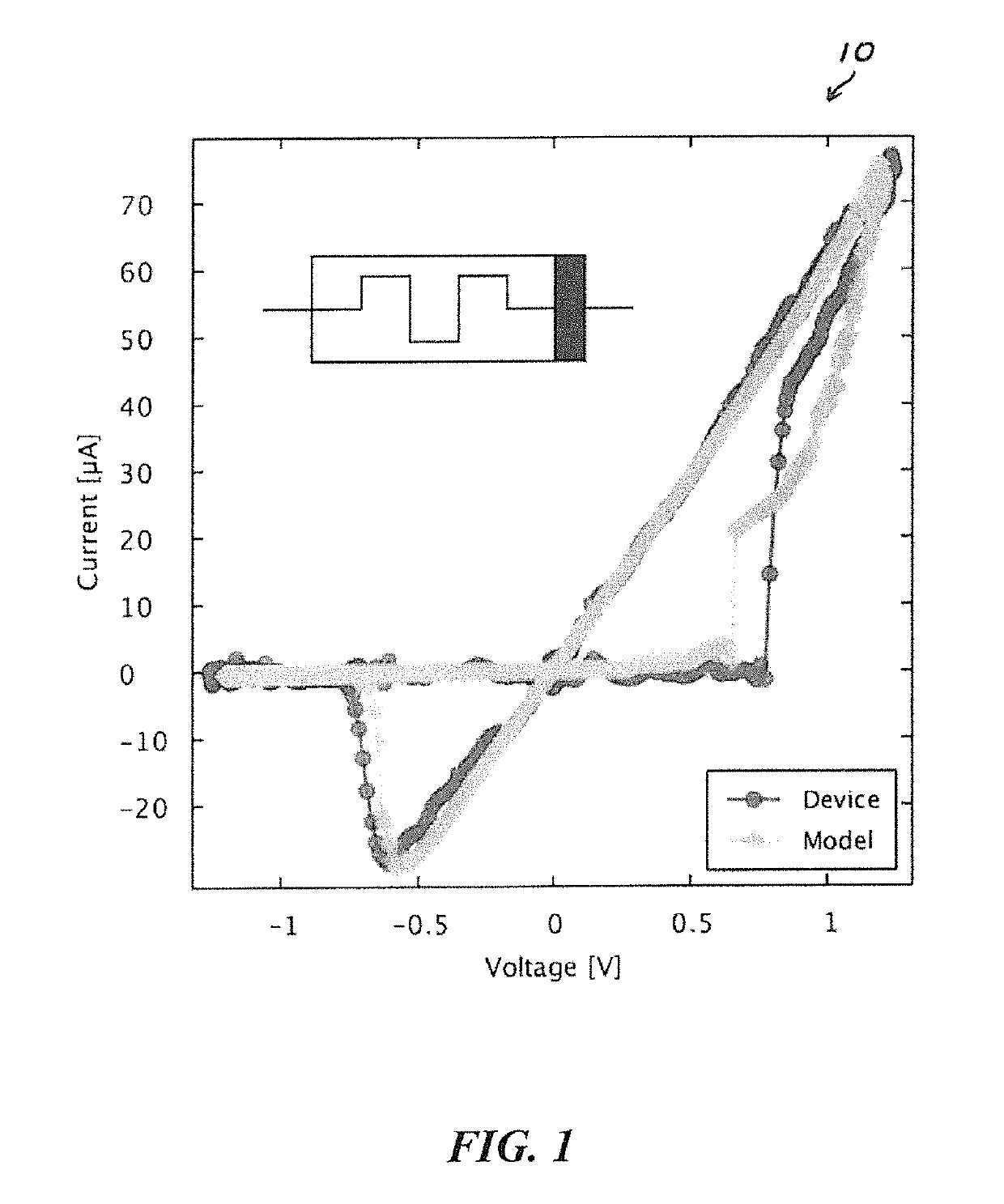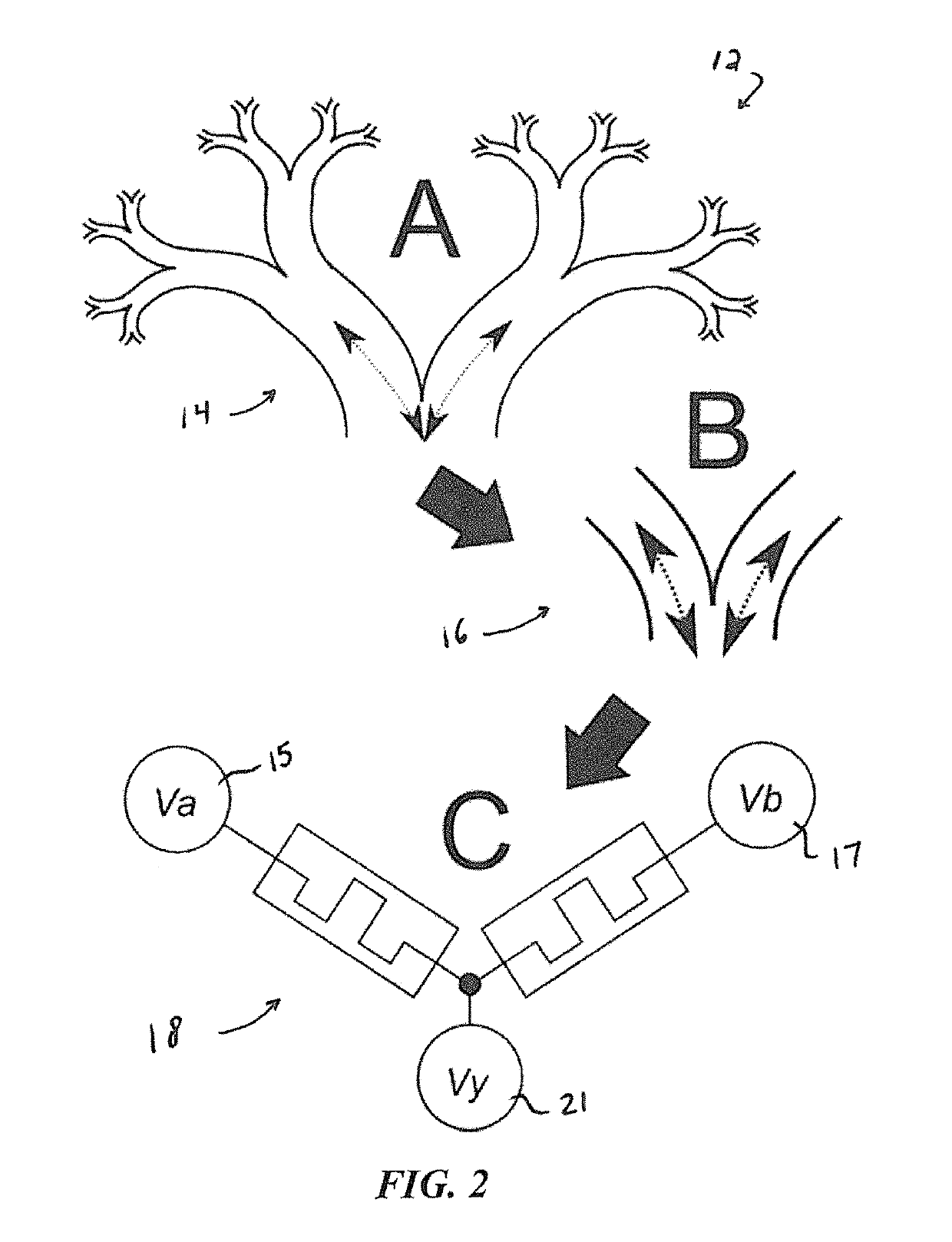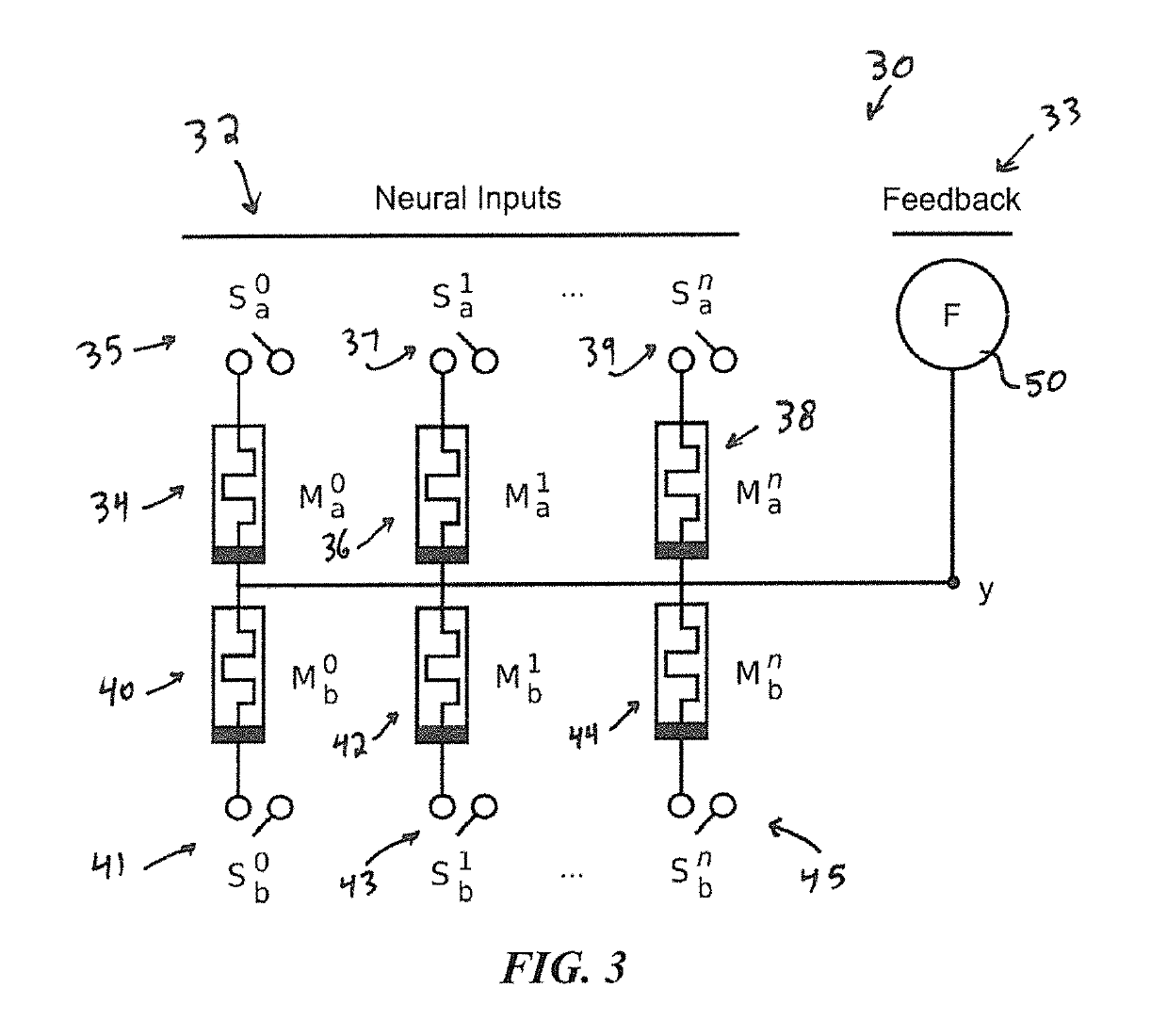Thermodynamic-RAM technology stack
a technology stack and thermodynamic technology, applied in the field of ahah (antihebbian and hebbian) computing, can solve the problems of inability to adapt parameters, large power required to adapt parameters, and run on traditional digital hardware, and achieve the effect of facilitating understanding
- Summary
- Abstract
- Description
- Claims
- Application Information
AI Technical Summary
Benefits of technology
Problems solved by technology
Method used
Image
Examples
Embodiment Construction
[0032]The particular values and configurations discussed in these non-limiting examples can be varied and are cited merely to illustrate at least one embodiment and are not intended to limit the scope thereof.
[0033]Thermodynamic-RAM is the first attempt of realizing a working neuromorphic processor implementing the theory of AHaH Computing. While several alternative designs are feasible and may offer specific advantages over others, the first design aims to be a general computing substrate geared towards reconfigurable network topologies and the entire spectrum of the machine learning application space.
[0034]As discussed herein, the entire design specification can be broken down into various levels from ideal memristors to integrating a finished product into existing technology. Defining the individual levels of this ‘technology stack’ helps to introduce the technology step by step and group the necessary pieces into tasks with focused objectives. This allows for separate groups to ...
PUM
 Login to View More
Login to View More Abstract
Description
Claims
Application Information
 Login to View More
Login to View More - R&D
- Intellectual Property
- Life Sciences
- Materials
- Tech Scout
- Unparalleled Data Quality
- Higher Quality Content
- 60% Fewer Hallucinations
Browse by: Latest US Patents, China's latest patents, Technical Efficacy Thesaurus, Application Domain, Technology Topic, Popular Technical Reports.
© 2025 PatSnap. All rights reserved.Legal|Privacy policy|Modern Slavery Act Transparency Statement|Sitemap|About US| Contact US: help@patsnap.com



